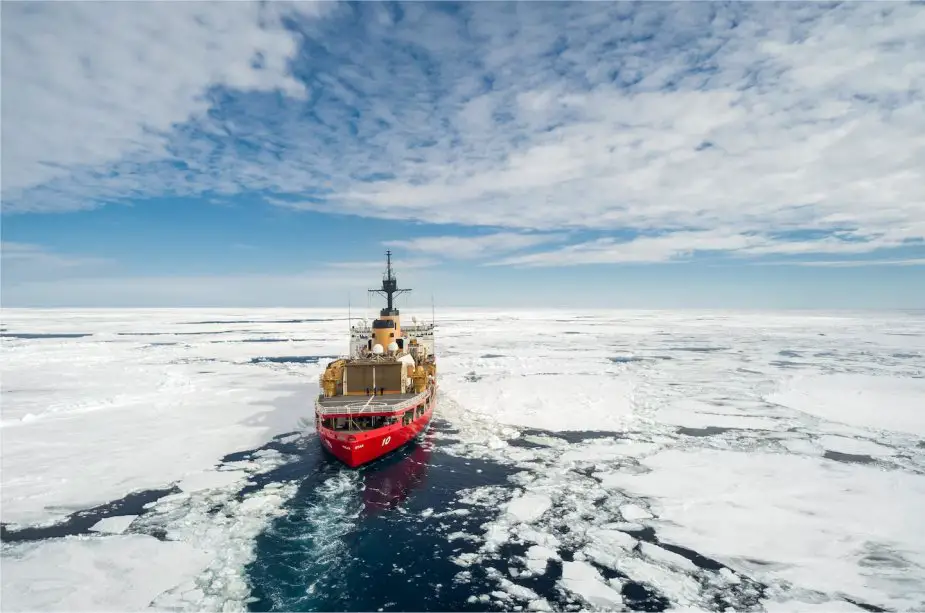Breaking news
US Coast Guard's icebreaker Polar Star achieves Antarctic mission.
According to information published by the US Coast Guard on March 16, 2023, the cutter Polar Star (WAGB 10) and crew departed the Antarctic region, after 67 days below the Antarctic Circle in support of Operation Deep Freeze 2023.
Follow Navy Recognition on Google News at this link
 Polar-class icebreaker USCGC Polar Star. (Picture source: US Coast Guard)
Polar-class icebreaker USCGC Polar Star. (Picture source: US Coast Guard)
The Polar Star and crew broke a 17-mile channel through fast ice and conducted over 1,600 hours of ice breaking operations to create a navigable route for cargo vessels to reach McMurdo Station. The Polar Star and crew executed more than 60 hours of ice escorts for cargo vessels through difficult pack ice conditions.
While operating in Antarctica, the Polar Star and crew made two logistical stops at McMurdo Station. After the first stop in McMurdo, the cutter and crew assisted in moving a 30,000-ton aging and degraded ice pier from Winter Quarters Bay to make way for a modular causeway system that was installed for the season.
The cutter also provided an ice escort to motor vessel Ocean Giant and crew, who delivered the 65-ton MCS that was offloaded, assembled, and used as a pier to replace the traditional ice pier used for cargo operations.
Before departing the Antarctic Region, the cutter also visited Palmer Station, the United States’ research facility located on the Antarctic Peninsula. Polar Star personnel went ashore to meet with the station manager and staff, tour the facility, and shared camaraderie in one of the most remote regions on the planet. This was the first visit from a U.S. Coast Guard icebreaker to Palmer Station since 1987.
USCG Polar Star
She has a standard displacement of 10,863 long tons (11,037 t) and a full displacement of 13,623 long tons (13,842 t). The vessel is 399 ft (122 m) in length and 83 ft 6 in (25.45 m) in beam, with a draft of 31 ft (9.4 m).
The icebreaker is powered by six Alco 16V-251F diesel engines, each with a capacity of 3,000 hp (2,200 kW), and three Pratt & Whitney FT-4A12 gas turbines, with a capacity of 25,000 hp (19,000 kW) each.
The propulsion system is a combined diesel-electric or gas (CODLOG) system, which drives three shafts with controllable-pitch propellers. The vessel has a maximum speed of 18 knots (33 km/h; 21 mph) and can move at 3 knots (5.6 km/h; 3.5 mph) in 6-foot (1.8 m) ice.





























